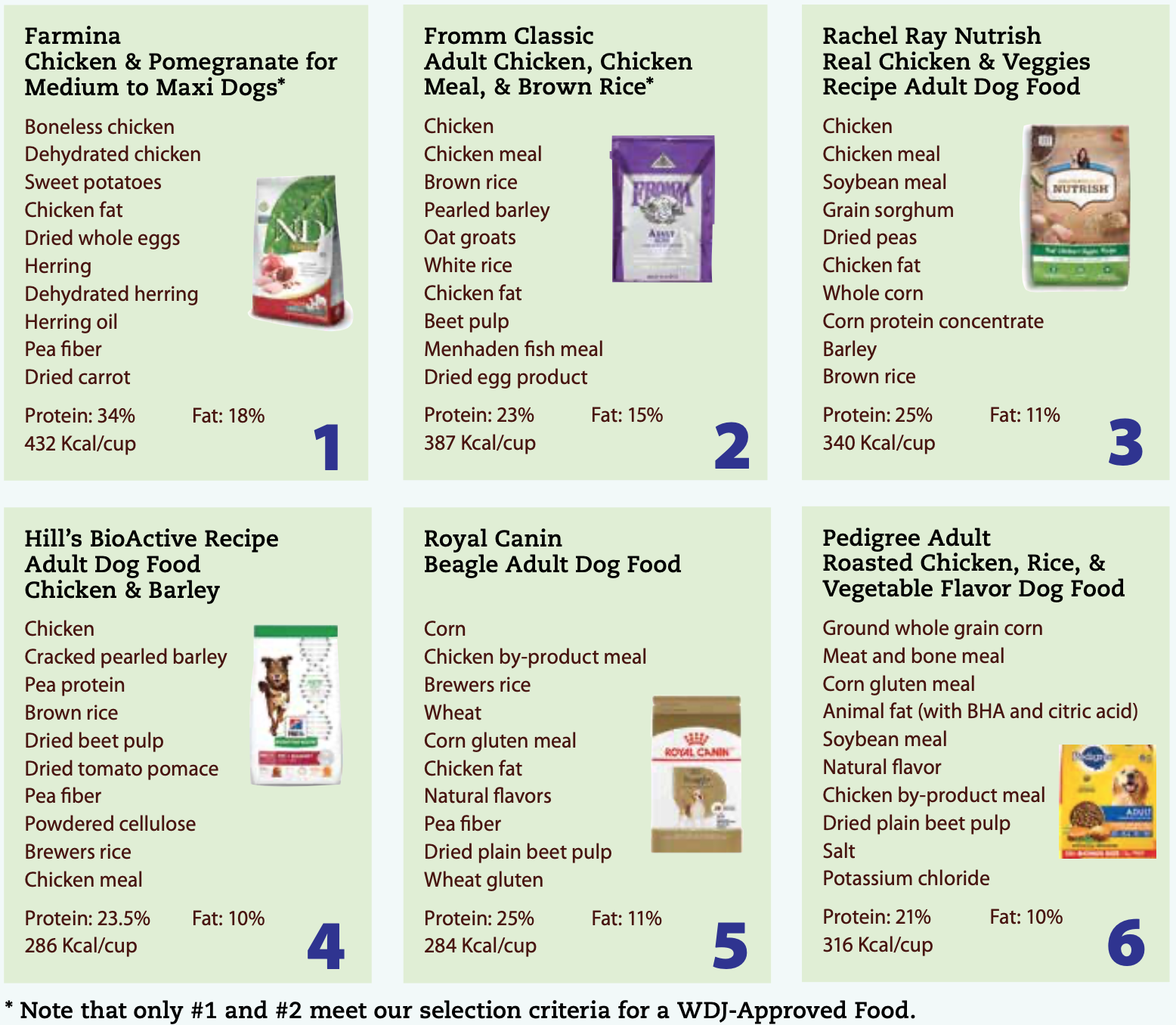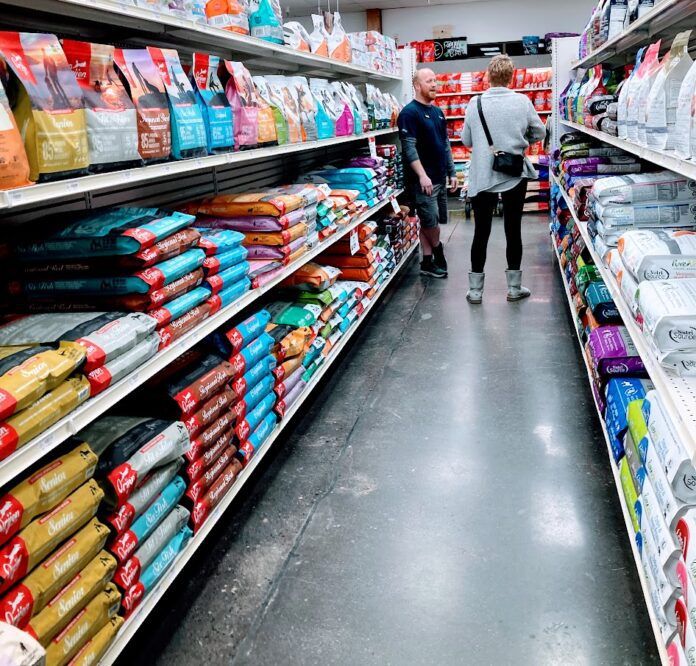Many people (and even many veterinarians) believe that all foods that are labeled as “complete and balanced” contain approximately the same amounts and levels of nutrients. This presumes that pet food makers are all working to meet some sort of “recommended daily allowance” (RDA) of nutrients required by dogs – but it’s not true.
The RDA nutrient levels for humans were developed by the Food and Nutrition Board of the National Research Council/National Academy of Sciences. Vitamin, mineral, and macronutrient (fat, protein, carbohydrate) levels are expressed on our food packages as providing some percentage of the total amount of various nutrients that we need daily. But this isn’t how nutrient levels in pet foods are expressed.
The Association of American Feed Control Officials (AAFCO) establishes the nutrient levels that legally constitute “complete and balanced” diets for our pets, and publishes the requirements for canine diets in a table – the “AAFCO Dog Food Nutrient Profiles.”
But, unlike the human RDAs with target levels of nutrients, the Dog Food Nutrient Profiles consist only of minimum values for all the nutrients required by dogs and maximum values for just a few nutrients. As long as a food meets the minimum nutrient values expressed in the profiles, and doesn’t exceed the maximum values, it can be labeled as “complete and balanced.”
Let’s say it another way: The foods on your pet store shelves may actually contain wildly varying levels of vitamins, minerals, and macronutrients, and yet all can call themselves “complete and balanced.”
All of the chicken- and rice-based foods below are labeled as “complete and balanced” diets for adult dogs; each purportedly meets the minimum nutritional standards for the “maintenance” of adult dogs. But we can’t possibly consider these foods as equivalent. We’ve listed the first 10 ingredients from their labels so you can compare the formulas. We’ve also positioned them in order of decreasing quality – from first to worst – in our opinion and according to our selection criteria.

SUBSCRIBER ONLY: Whole Dog Journal’s 2023 Approved Dry Dog Foods
What’s the best dry dog food? Check out our favorites in a variety of dry dog food categories
Hallmarks of Quality: How We Identify Healthy Dog Foods







Can a person mix dry & wet food to satisfy a healthy dog food as well as lower the cost of canned dog food??
Example: Hill’s ID Chicken and vegetable stew with their dry ID food.
12 cans equaled $50. In Dec and is now $58. Also the canned food has much more liquid than usual, smaller meat bits and more white rice. As a senior it’s nearly impossible to feed solely canned food. So sad!